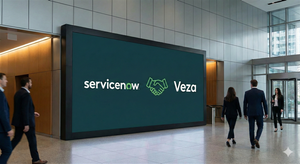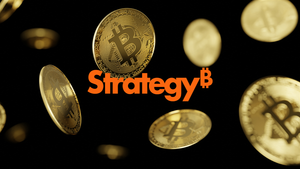Buy SentinelOne Now? AI Growth Surges After CrowdStrike Fallout

SentinelOne Inc. (NYSE: S) is a cybersecurity company that provides an artificial intelligence (AI)-powered autonomous cybersecurity platform. Its Singularity XDR cloud-native platform offers many competitive advantages to competitors in the computer and technology sector, such as CrowdStrike Holdings Inc. (NASDAQ: CRWD), Palo Alto Networks Inc. (NASDAQ: PANW), and Fortinet Inc. (NASDAQ: FTNT).
SentinelOne’s Singularity XDR platform leverages AI and machine learning to detect and respond to potential threats in real time, enabling accelerated and accurate threat mitigation.
It offers scalable and comprehensive endpoint and workload protection.
Its lightweight, single-agent architecture for prevention and detection simplifies onboarding, deployment, and management.
The CrowdStrike Incident Butterfly Effect
On July 19, 2024, CrowdStrike pushed out a software update for its Falcon platform that caused its customers' Microsoft Co. (NASDAQ: MSFT) Windows operating systems to crash, resulting in the infamous "Blue Screen of Death." The outage was widespread across 8.5 million Windows devices, causing service disruptions in many industries and systems.
It resulted in numerous outages, resulting in medical procedures and flights being delayed or canceled, affecting healthcare and transportation industries the hardest. While the 8.5 million devices were just 1% of all Windows devices, the problem was that the affected devices belonged to organizations that rely on CrowdStrike's cybersecurity platform to thwart attacks and incidents. The outage caused an estimated $5.4 billion in damages.
The Risks of Relying on a Single Vendor
Incidentally, the damage only affected Windows operating systems, not Linux or Apple Inc. (NASDAQ: AAPL) iOS. Companies were reminded of the perils of relying on a single vendor and the importance of a robust software update mechanism. The damage to CrowdStrike's reputation was massive as customers looked at other alternatives to prevent incidents like this from happening again.
SentinelOne Gains on CrowdStrike’s Pains
While CrowdStrike didn't disclose what kind of damage they suffered, their liability was mostly limited to refunds. However, the damage to its reputation and potential for closing and onboarding new customers took a hit. SentinelOne highlighted how they emphasize gradual and phased rollouts and isolated multi-tenancy to minimize risks of outages. This was in stark contrast with CrowdStrike's approach. SentinelOne stated there is better architecture out there and has never and will never deploy a fleetwide update like CrowdStrike did.
Quarterly Numbers Hit Records
SentinelOne recorded its first-ever quarter of positive net income in its fiscal second quarter of 2025. The company reported EPS of a penny, beating consensus estimates by a penny. Revenues jumped 33.1% YoY to $198.94 million, beating $197.32 million consensus estimates. Annualized recurring revenue (ARR) rose 32% YoY to $806 million.
Customers with over $100,000 in ARR rose 24% YoY to 1,233, and customers with over $1 million in ARR rose to a new record. GAAP gross margin improved to a record 75% from 70% in the year-ago period. GAAP operation margin improved to negative 40% from negative 67% in the year-ago period. Operating cash flow margin improved to 1% from negative 8% in fiscal Q2 2024. The company ended the quarter with $1.1 billion in cash and cash equivalents.
Upside Guidance Follows
SentinelOne provided upside guidance for fiscal Q3 2025 with revenues of $209.5 million versus $209.43 million consensus estimates.
Non-GAAP gross margin is expected to be around 79%, and non-GAAP operating margin is expected to be negative 3%.
The company expects fiscal full-year 2025 revenues of $815 million versus $813.18 million consensus estimates.
Non-GAAP operating margins are expected to be around 79% and negative 5% to 3%.
CEO Stresses the Significance of Platform Architecture
SentinelOne CEO Tomer Weingarten remarked on the significance of cybersecurity platform architecture in the shareholder letter, taking a jab at CrowdStrike without naming them. Due to the incident, he stated that some of the world’s largest enterprises are now evaluating and “appreciating” the Singularity platform’s breadth and superiority.
Weingarten stated, “As a result, customer interest in our platform and AI-based security has distinctly risen. At SentinelOne, we continue to lead with better technology and customer transparency. Early on, we purpose-built an agent that can simultaneously run dual AI-based detection engines both cloud natively and on-device.”
Weingarten added, “We patented behavioral AI for real-time protection on the device, complemented by comprehensive context and triage in the cloud. Redundancy in this context is mission-critical and is not a function of constant software updates.”
S Stock Forms a Bearish Ascending ABCD Pattern
An ABCD pattern is a harmonic formation comprised of 4 zig-zagging reversal points labeled A, B, C and D. An ascending ABCD is a bearish reversal pattern, while a descending ABCD pattern is bullish.

S formed its ascending ABCD pattern that peaked at point D at $26.62. The sell triggered on the 2nd candle/bar low under $23.20. This implies a potential move to point C at $18.80 unless S manages to retake the $23.20 trigger. The daily relative strength index (RSI) fell to the 42-band. Fibonacci (Fib) pullback support levels are at $19.97, $18.32, $17.19 and $16.07.
SentinelOne’s average consensus price target is $27.96, and its highest analyst price target sits at $34.00.
S is in a bearish pattern, which benefits from using cash-secured puts under the Fib support pullback levels to buy on a pullback. Upside targets include the fib extensions, sell trigger, point D and analyst price targets. A wheel strategy can be executed by writing covered calls after being assigned.
More News
View More




Recent Quotes
View More
Quotes delayed at least 20 minutes.
By accessing this page, you agree to the Privacy Policy and Terms Of Service.